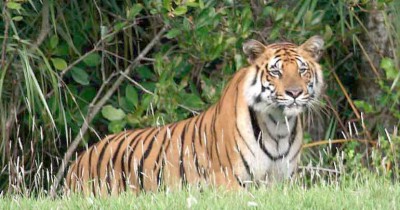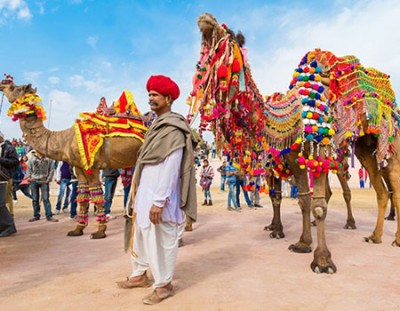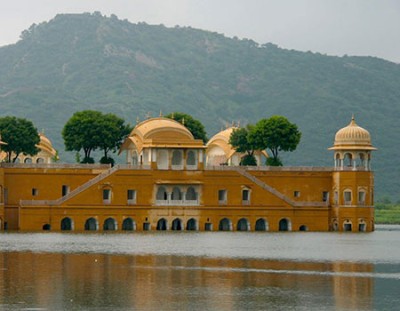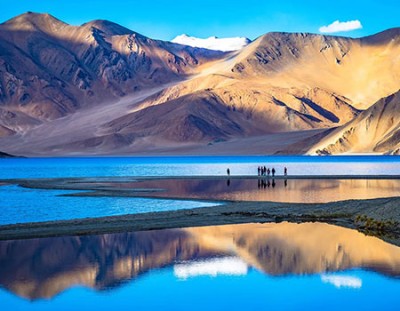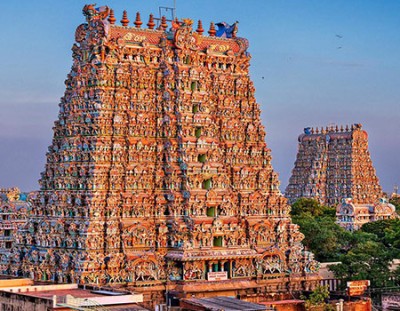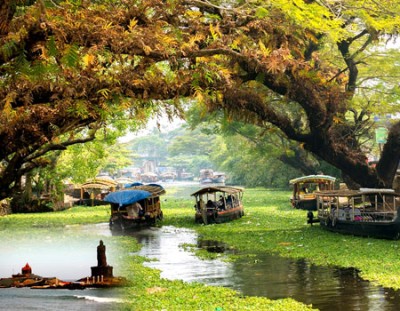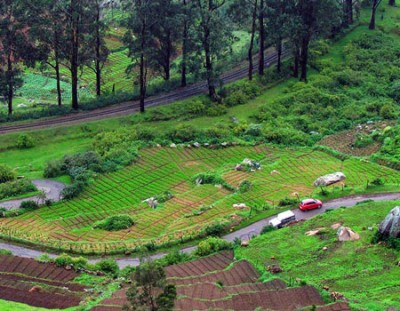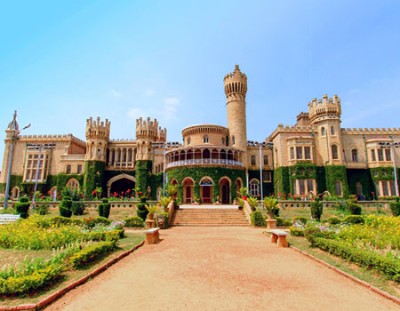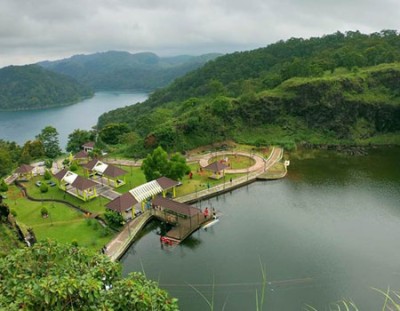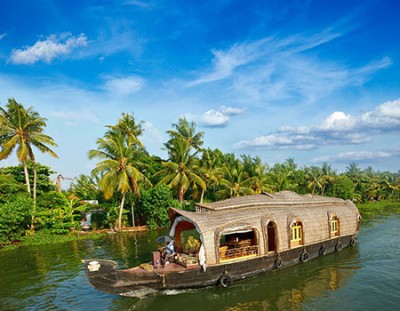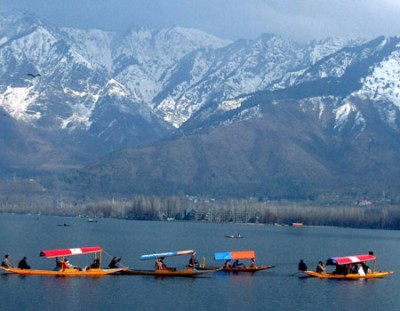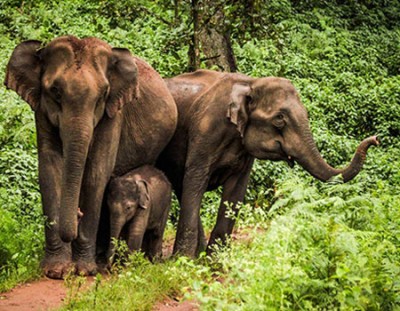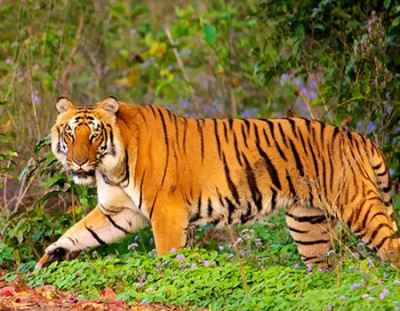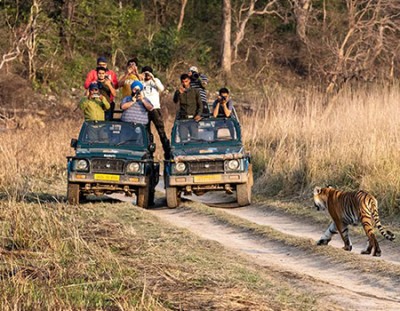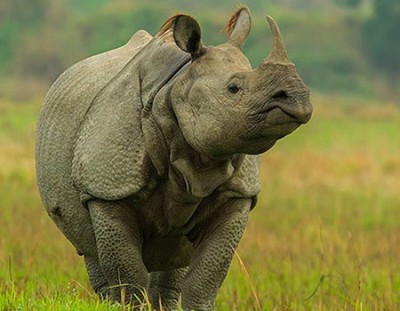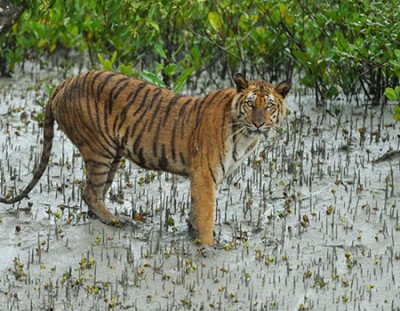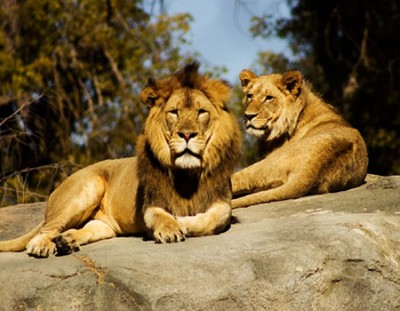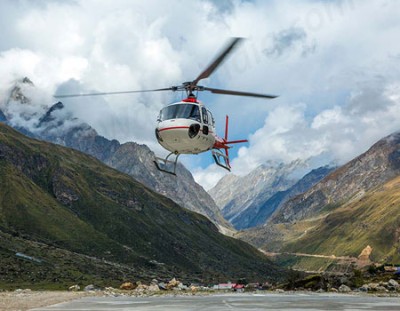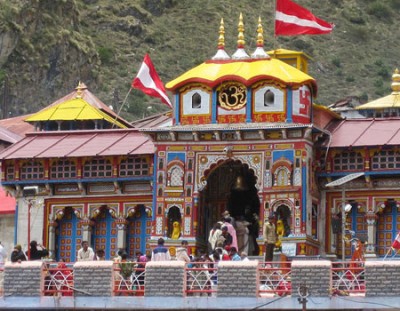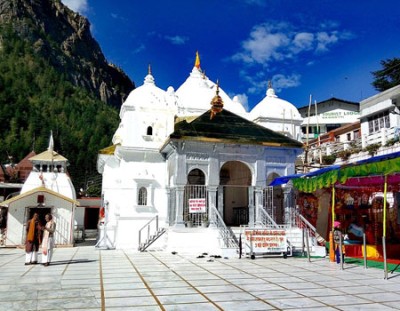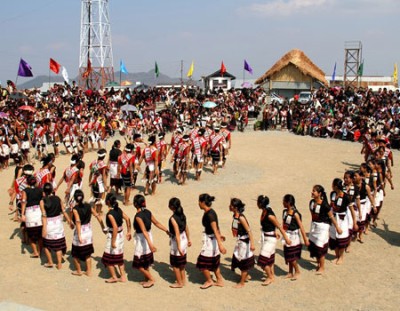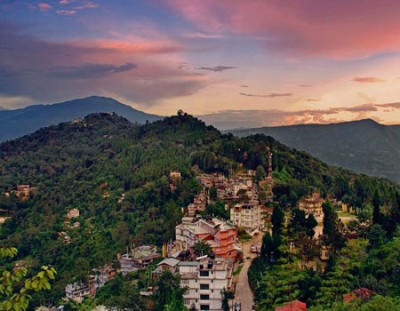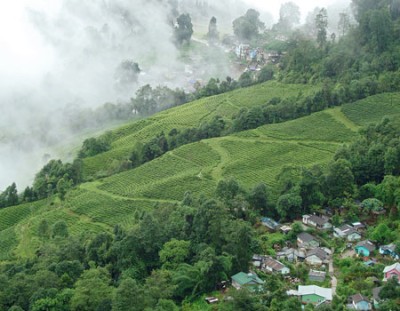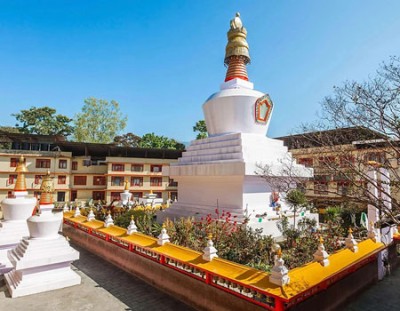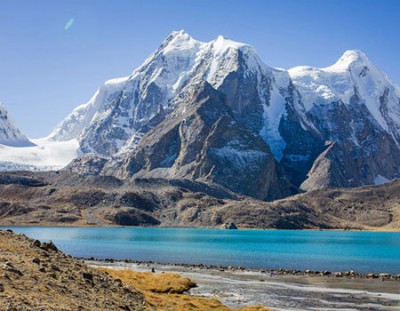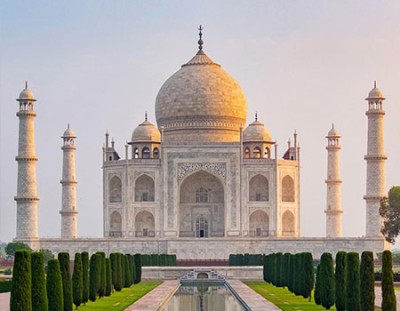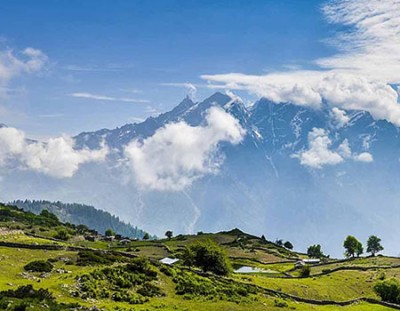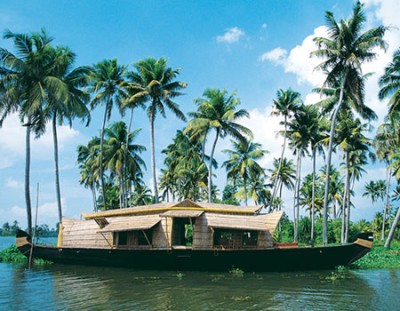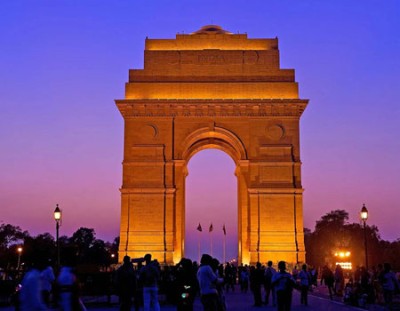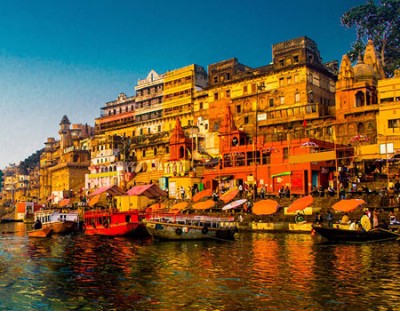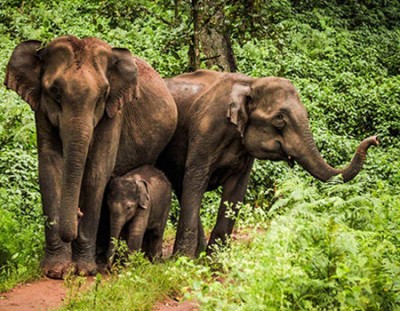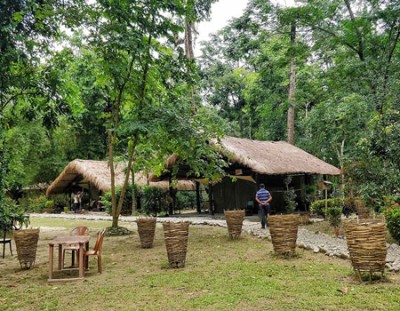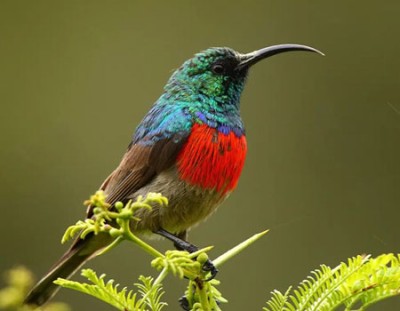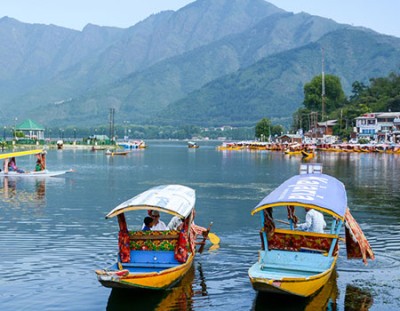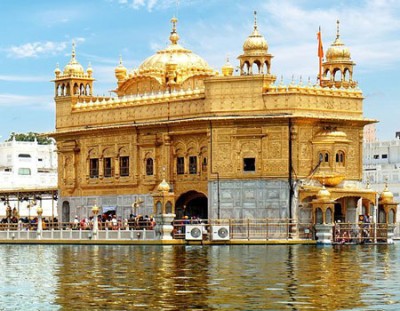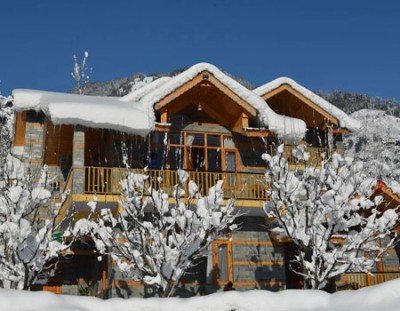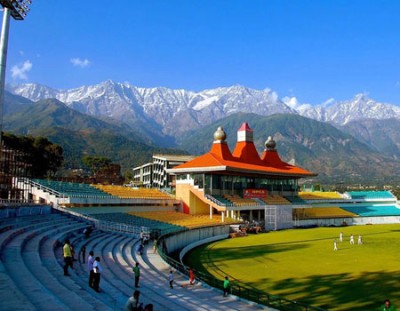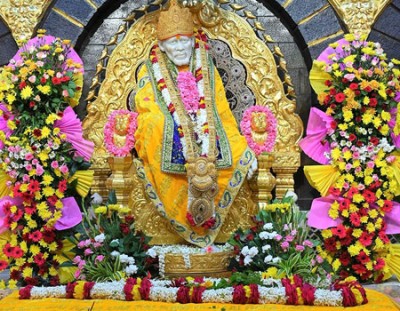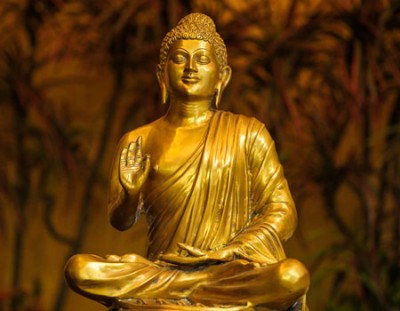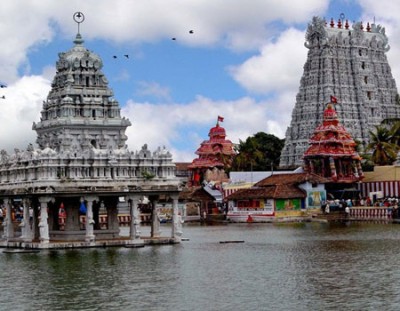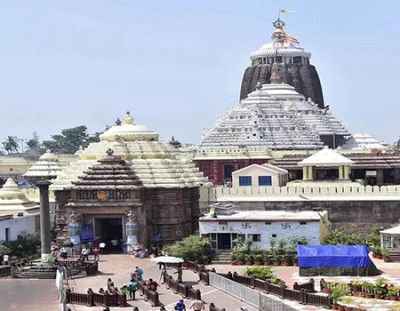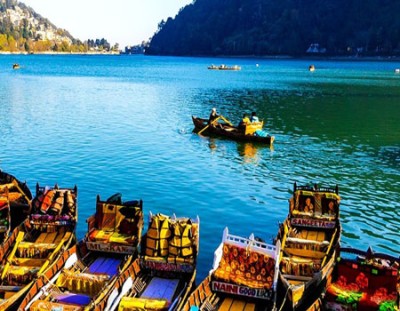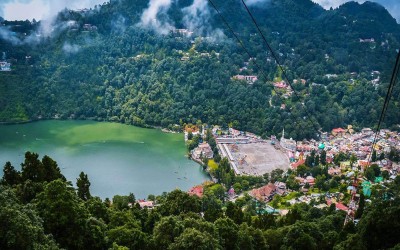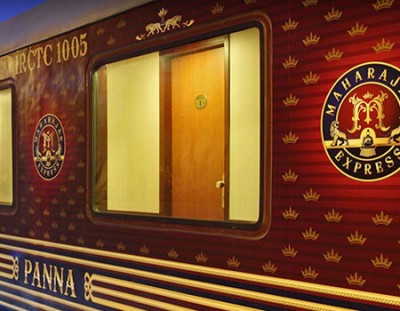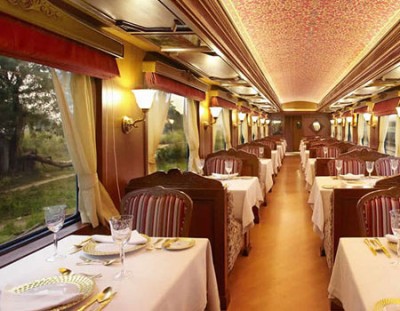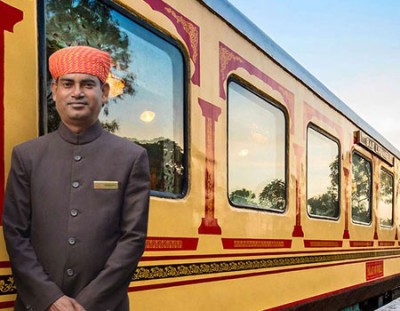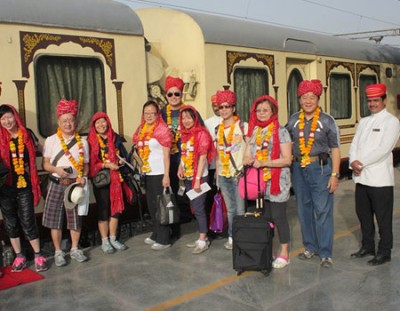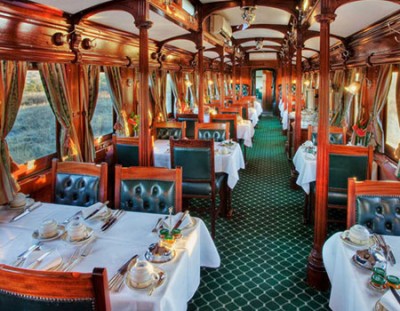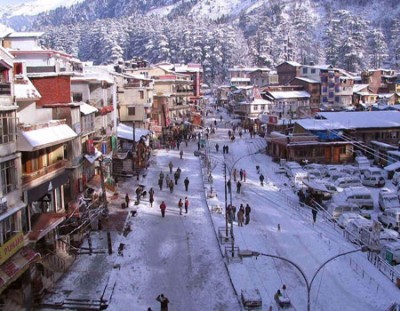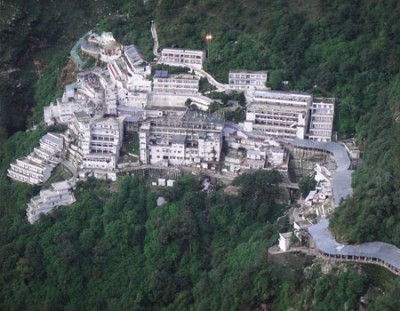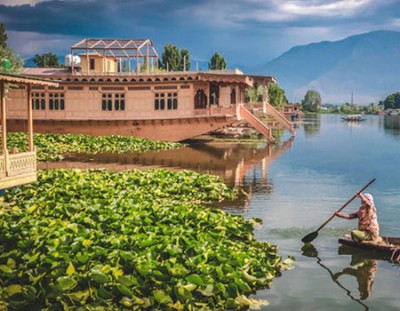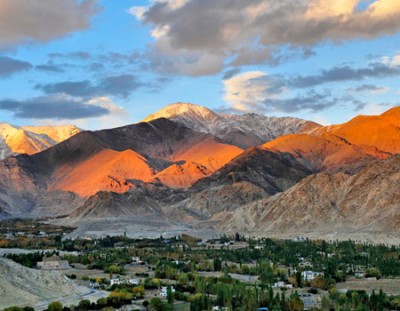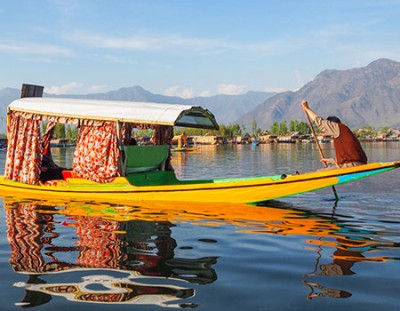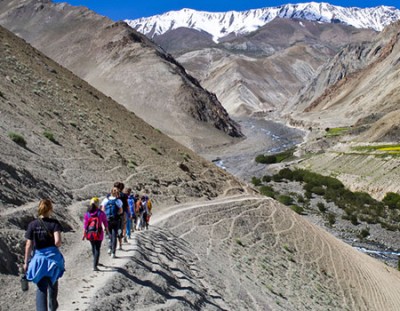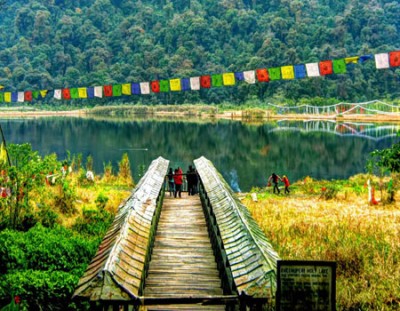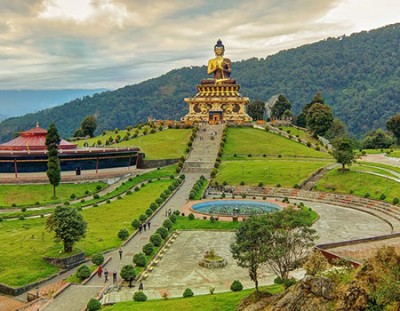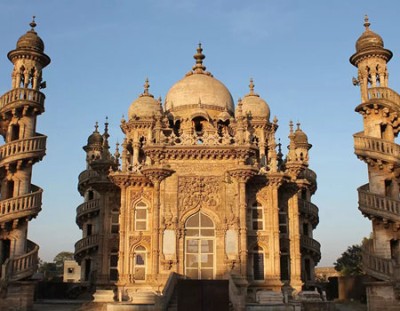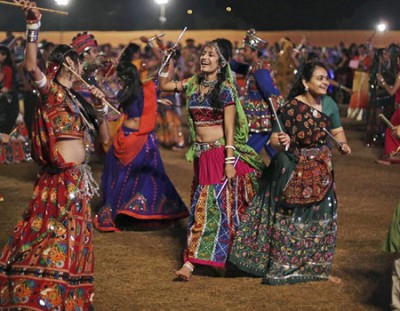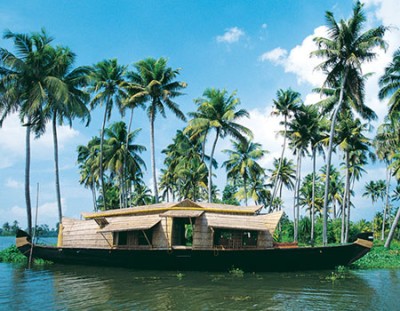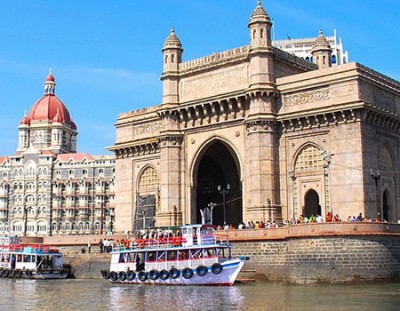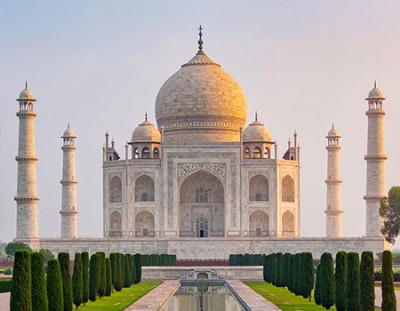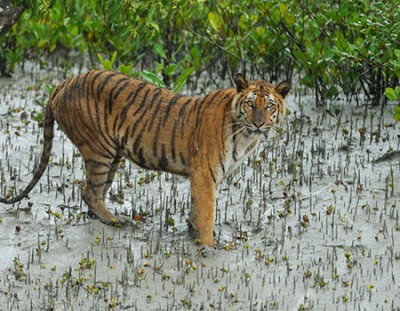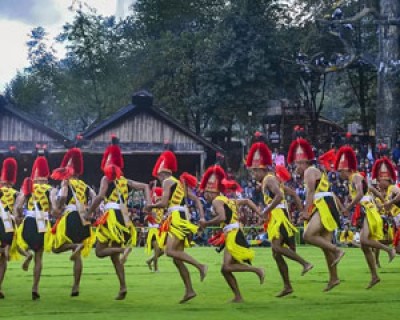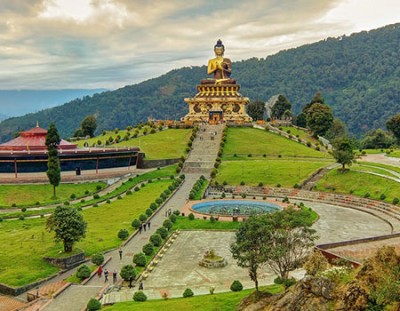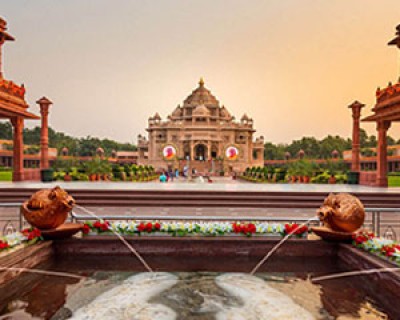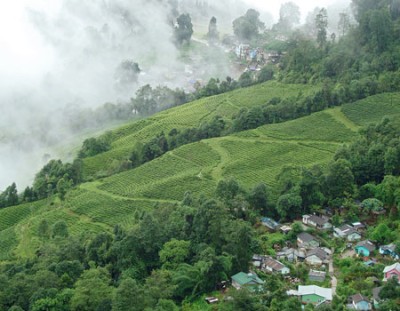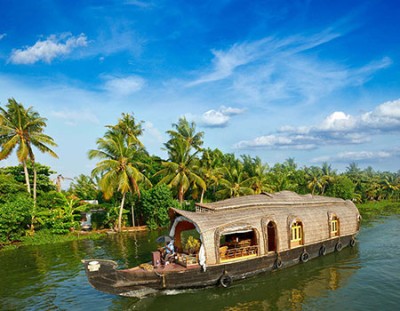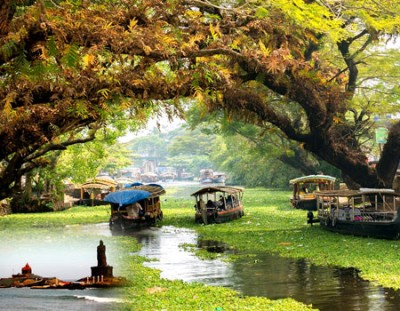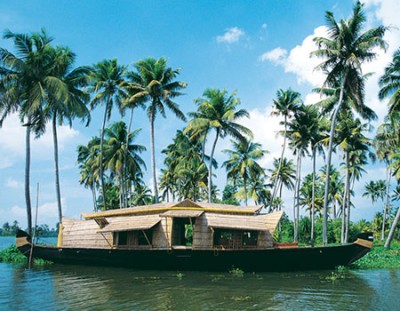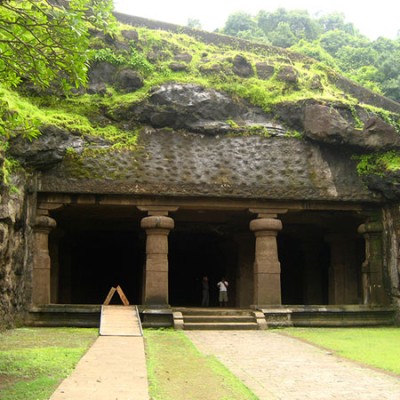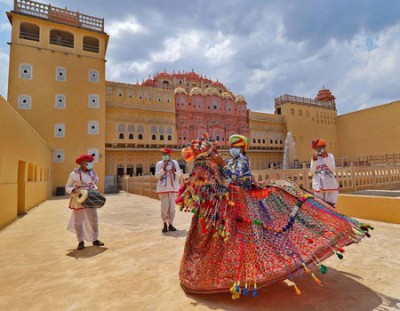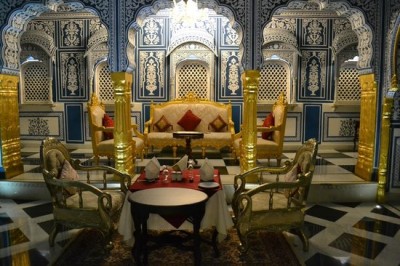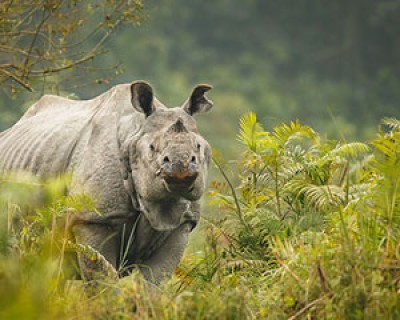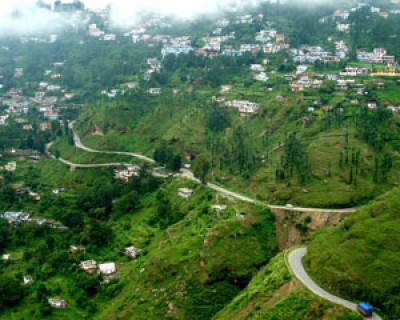
Seven Sister Tour Of India
Itinerary
Arrival / Guwahati (Assam)
Meeting and assistance upon arrival at Guwahati airport and transfer to hotel.
Meeting upon arrival and transfer to hotel.
Guwahati: Guwahati is Situated on the Southern bank of the mighty River Brahmaputra in Kamrup district of Assam. Previously it was known as Pragjyotishpur (The City of the eastern Light) Guwahati is the fast growing premier city and it is also the gateway to the North Eastern states of India. This city subsequently got the name Guwahati (Guwa-means beetlenut and Hat means market in Assamese)
Afternoon visit the Nilachal Hills which is known as the home to the Tantra (Black Magic) and the most sacred Temple in this part of the country. In Nilachal Hill, visit:
Kamakhya Temple: The origin of Kamakhya Temple is pre Aryan situated atop the Nilachal Hill. The formost shrine of Assam, The Kamakhya is an ancient seat of Tantric and shakti Cults of Hinduism. The original temple was destroyed by the invading Muslims in their crusade against Hindu temples and idols in the early part of 16thecentury. Ultimately it was restored from ruins by King Naranarayan of the Koch dynasty and rebuilt in its present forming 1665 AD.
Bhairabi temple : Bhairabi temple is situated in the lower portion of Nilachal hill. The floor area of the temple is said to be on human skulls. In each night of Full Moon and Dark Moon, the priests offer puzas to Devi Bhairabi in tantrik system. The pond in the temple complex is full of tortoises population of very old times. When called as Mohan with some food-stuff they rush towards the beach to get it.
Bagala temple : The followers of tantras offer puja in the Bagla temple. There is a common belief that Bagala Devi provides mental peace and relief to the devotees, when confronted by evils and foes.
Navagraha Temple: To the extreme east of Guwahati on the Chitrachal Hills stands the Navagraha Temple (Temple of Nine Planets) is a center of Astrological and Astronomical research. The govt raised some quarters here and as a result of excavation twelve Shiva Temples have been un earthed.
Evening enjoy the sunset cruise in Brahmaputra river .
Overnight at hotel.
Guwahati / Shillong (95 Kms, 2 hrs drive) (Meghalaya)
Morning after breakfast depart for Shillong, the Scottland of East
En route visit:
Barapani (Umiam Lake): As per the legends, two heavenly sisters decided to make their way to Meghalaya. However, one of them had reached the destination and the other could not due to some reason. So the former could not traced out her sister and started crying with her broken heart. She cried so much that and a lake was formed with her tears. Locally known as Umiam Lake, Barapani means vast waters.
Today it becomes a hub for the water sports activities such as speed boats, sailboats and water scooters. Adjoining to the lake, the Nehru Park offers an aviary and a collection of orchids and butterflies.
Arrive Shillong and check in at hotel.
Shillong: The Capital of Meghalaya, Shillong is one of the major tourist destinations in North East India. The British loved this place so much that they had established its Capital for Eastern Bengal and Assam For its climate and unique topographical features the British referred Shillong as the Scottland Of The East.
In Shillong visit:
Wards Lake: Wards Lake is located in the heart of the Shillong City adjoining to the Governor Residence. Shaped like a horseshoe, it is one of the prominent hang-out spot in Shillong. This century old lake was built by an engineer named Mr. Pollock. Hence it is also known to be as Polok Lake One can opt for boating and pleasant walks on the cobbled sand stone pathways covered with varieties of flowers. The lake also has an arched bridge from where one can feed the fish.
Cathedral of Mary Help of Christian: Situated in At Laitumkhrah, it is the largest Cathedrel in Meghalaya attracts thousands of devotees. The colorful glasses of the skylight window along with the paintings of the Jesus spreading the messages of God are influenced by the European art and architecture.
Don Bosco Museum:The Don Bosco Museum of Indigenous Cultures at DBCIC (Don Bosco Centre for Indigenous Cultures) is Asias largest Museum of Indigenous Cultures of its kind. In it the visitor can have an overview of the whole of North East India. Rising into Shillongs skyline the Museum is a seven storey building with 17 well laid out Galleries of international standard containing artefacts, paintings, fibreglass figures all a feast to the eyes and a source of knowledge. The topmost Gallery is where the visitors can relax and enjoy some of the rare dances of the North East. The Museum is indeed a surprise to visitors both from India and from abroad. Its best publicity are the visitors themselves who come to see it.
Lady Hyderi Park: Lady Hydari Park is among the most frequented tourist spots of the region. The park is dedicated to the first lady of the province, Lady Hydari, wife of the Governor of Assam. Lady Hydari Park encompasses a wide variety of local flowering plants and orchids, and is landscaped in Japanese style. Lady Hydari Park is among the most frequented tourist spots of the region. The park is dedicated to the first lady of the province, Lady Hydari, wife of the Governor of Assam. Lady Hydari Park encompasses a wide variety of local flowering plants and orchids, and is landscaped in Japanese style.
Shillong Golf Course:Shillong Golf Course is termed as the Glen-eagle of the East at the United States Golf Association Museum. The Golf Course is situated in a valley covered with thick groves of pine and rhododendron trees at an altitude of 5200 ft. Previously it was a nine hole course and later converted into a eighteen hole course in 1924 by Captain Jackson and C. K. Rhodes. It is the third oldest Golf Course in India.
Overnight at hotel.
Shillong / Cherrapunjee / Shillong (56 Kms 1 way, 1 ½ hrs drive)
Morning after breakfast full day excursion to Cherrapunjee
Cherrapunjeeis a small hamlet, situated at an altitude of about 4823 feet (1484 m). Locally known as SOHRA. Cherrapunjee is located in the southern most point of Khasi hill sharing the border of Sylhet district of Bangladesh. Cherrapunji offers a panoramic view of the hilly terrains, deep gorges and valleys with its spectacular waterfalls. It was once having the record of being the wettest place on earth, with an average rainfall of about 1150ms. However, this record has been overtaken by a nearby place Mawsynram
In Cherrapunjee visit:
Nohkalikai falls:This waterfall located 4 kms away from Cherrapunjee and is possibly between 1500 and 2000 feet tall. Known to be the fourth longest fall in the world it carries a pathetic legend behind its name.A woman named Ka Likai had a illegitimate child. After marriage the husband became jealous of her love for her daughter. One day Ka Likai was out for work and her husband killed the daughter, cooked her flesh into a meal. When the woman enquired about her daughter, her husband showed the sign of ignorance. Before she went to look for her daughter, she thought of eating something and had the meal that her husband prepared for her. After having the meal she found both the wrist of her daughter in the betel-nut basket. Then she realized what had happened, killed her husband with a dagger and threw herself off this cliffof this falls.This is how the falls got its name which means Fall of Ka Likai.
Mawsmai Cave:This 250m long cave is the major attraction for the tourists in Cherrapunjee. This cave is located 6 kms away from Cherrapunjee near to Mawsmai village. This natural limestone cave is wide enough for a person to walk comfortably, and one can see the myriads of stalagmites and stalactites all over the caves which are growing gradually. The caves are dark inside and electric torches are installed for the convenient of the tourists.
Nohsngithiang Falls (Seven Sister Falls): It is a seven-segmented waterfall, which plunges over the top of limestone cliffs of the Khasi Hills. The falls only flow during the rainy season. In full spate, the segments stretch most of the way along the cliff. The water falls from a height of 315 metres (1,033 ft) and has an average width of 70 metres (230 ft).The waterfalls get illuminated by the sun from dawn to sunset. The vibrant colours of the setting sun on the waterfalls make it beautiful to behold
Later return to Shillong.
In Shillong visit:
Shillong Peak:It is the highest point of Shillong, located in the upper Shillong an an altitude of 1961 meters (6,433 feet). The name Shillong originated from Leishyllong meaning god who is believed to live on the Shillong peak, overlooking the city. It is located 5 kilometers away from Shillong and on a clear day one can enjoy the beautiful view of the entire city.
Elephant Falls:Located in the Upper Shillong 10 kms away from the Shillong town it isone of the majestic waterfalls in Meghalaya. The water of this three steps falls comes down in flows from different levels over the fern-covered rocks and falls into the canyon down below. In the morning it forms a wonderful sight when the sun rays fall on the cascades of water creating the rainbow colors. The best time to visit the waterfalls is during the monsoon when it offers a breath-taking scenery. The forests covered with ferns and thick bamboo grooves are also worth visited for the nature lovers to find the presence of various species of butterflies, birdsand orchids.
Overnight at hotel.
Shillong / Nameri National Park (285 Kms, 8 hrs drive)
Morning after breakfast depart for Nameri National Park
Nameri National Park:The Nameri National Park of 200 sq kms area is located in the Sonitpur district, bordering Arunachal Pradesh and it is also the core area of Nameri Tiger Reserve(344sq kms). It is the home ofMammals like Elephant, Tiger, leopard, Sambar,Barking deer, Hog Deer, Wild Boar,Gaur, slow loris,gaplangur,Burmese ferret badger, and over 350 species of birds including White-winged Wood Duck, Ibisbill (uncommon), Ruddy Kingfisher, Palla sfishing eagle,Lesser Adjutant stork , Greater spotted eagle,Rufous necked hornbill, Great pied Indian hornbill, Wreathed hornbill, Long-billed Ringed Plover, Sultan Tit, and Yellow-bellied and White-throated Fantails. Another important wild life sanctuary of Arunachal Pradesh The Pakhui (Pakke) wild life Sanctuary adjoins the Park on its North-Eastern point. The river Jia- Bhoroli and its tributaries namely the Diji, Dinai, Doigurung, Nameri, Dikorai, Kharietc crisscross the park. During rainy season A few jheels (during the rainy seasons) also dot the area. One can enjoy rafting in the Jia Bhoroli river in the south western boundary.
Arrive and check in at Eco Camp.
Rest of the time free to explore the nature by your own.
Overnight at Eco Camp.
Nameri / Dirang (270 Kms, 8 hrs drive) (Arunachal Pradesh)
Early morning go for the nature walk and the bird watching trip into the dense jungle of Nameri National Park with the forest guards.
After an early breakfast depart for Dirang
En route visit:
Bhalukpong : Situated on the Assam-Arunachal border, 250 kms from Guwahati, Bhalukpong is another picturesque spot for angling and leisurely picnics.
Tipi Orchid Sanctuary and Research Center:An Orchidarium at Tipi (5 kms from Bhalukpong) on the way to Bomdila is the Botanical paradise. About 300 species of orchids can be seen in the flora glass house. Some of them are rare and endangered species. By the side of the glass house there is an orchid museum too.
Arrive Dirang and check in at hotel.
Dirang : Dirang 40 kms from Bomdila is situated at an altitude of 1497 meters. It is an ideal hill resort in West Kameng district with beautiful Apple Nursery, Kiwi Farm, Yak Research Centre, Buddhist Gompa, Hot Water Spring and ancient Dirang Jong (Fort). It is the base camp for trekking to Gorichen peak and other bird watching trails
Rest of the time free at leisure.
Overnight at hotel.
Dirang / Tawang (140 Kms, 6 hrs drive)
Morning after breakfast explore the Dirang visiting the natural hot spring, Apple gardens and the Yak Breeding farms.
Later depart by car for Tawang.
En route visit
Jaswant Garh: The war memorial is located 14 kms from Sella Pass on the way to Tawang. The memorial pay homage to Jaswant Singh Rawat, Mahavir Chakra Awardee posthumous (the second highest award from the Indian Army). In the famous battle of Nuranang against Chinese in November 1962, Rawat and two other soldiers from 4th Batallion Garhwal Rifles were instrumental in killing 300 Chinese soldiers in 72 hours.
Sella Pass: The entry point into the Tawang Valley is Sela pass at an elevation of 13700 ft above the sea level.. Legend says that a monpa woman supported sepoy Jashwant Singh during his battle with the Chinese. She brought sepoy Jashwant supplies and used to heal his wounds. When Jashwant got martyrdom she killed herself as an act of loyalty.The glimpse of Paradise Lake in the Sella Pass makes your visit worth. Most of the time the lake is covered with thick blanket of snow.
Arrive Tawang and check in at hotel.
Evening free at leisure.
Overnight at hotel.
Tawang
Morning after breakfast explore Tawang, visiting
Tawang Monastery (Vihar): Tawang Monastery about 400 years old, situated at an altitude of approximately 10,000 ft. is the second largest Buddhist monastery in India. It also holds the distinction of being the birthplace of the 6th Dalai Lama. The monastery is the house of more than 700 monks. The monastery was founded by Merag Lama Lodre Gyamtso, in 1681 in accordance to the wishes of the 5th Dalai Lama, Nagwang Lobsang Gyatso. As per the legend, the site of the Monastery was chosen by the horse of Merag Lama. Merag Lama, who had been unable to decide a site to establish the monastery. One day he was praying in cave, seeking a divine guidance. When he came out after the prayers, he found his horse was missing. On search, the horse was located standing quietly on a hilltop. Considering that as the sign of divine blessing he decided to construct the monastery at the very spot. The monastery is also called Galden Namgey Lhatse meaning celestial paradise. There is a magnificent 8 meter high statue of Lord Buddha.The ancient library inside the courtyard has an excellent collection ofthangkas,painted with the blood from the nose of 5th Dalai Lamaand valuable Buddhist manuscripts mainly Kanjur and Tanjur numbering 850 bundles.
The Craft Center:The craft center in Tawang sells beautiful masks, hand woven carpets, jewellery in silver, coral and amber, chubas the local dressand delightful affordable mementos.
Tawang War Memorial:The memorial is dedicated to the martyrs of the 1962 Sino-Indian war. The memorial is 40-foot-high and like a stupa in design. It is locally called Namgyal Chortan. The names of 2420 martyrs imprinted in gold on 32 black granite plagues.
Gyangong Ani Gompa:Ani Gompas, which literally translates into Nunnery , are run by the women monks.No male monk can be seen near these Ani Gompas and all you can see are sparkle eyed and clean-shaven nuns who are busy managing the day-to-day operations of
the Ani Gompa. Gyangong Ani Gompa is the oldest Ani Gompa in the Tawang District. It is situated in the lap of a far off mountain laced with natural scenery. This Ani Gompa is under the administration of Tawang Monastery.
Sangestser Lake (OPTIONAL: Rs. 4500 Per Vehicle):Popularly known as Madhuri Lake is located 35 kms away from Tawang near the China Border. The drive to Sangestser Lake is full of thrill and one can still see the war bankers that had been used during the Chinses aggression in 1962 and the beautiful PTSO lake
Overnight at hotel.
Tawang / Bomdila (180 Kms, 7 hrs drive)
Morning after breakfast depart for Bomdila
En route stop at the Nuranang falls.
Arrive Bomdila and check in at the hotel.
Bomdila: On the way to Tawang , situated at height of 8500 ft (distance from Tezpur 180 kms), Bomdila is a picturesque town in the foothills of Himalayas and the headquarter of West Kameng District the land of the Monpa, Sherdukpen, Aka (Hrusso), Miji and Bogun (Khawas) tribes. One can see the brilliant landscape and snow-clad Gorichen ranges of the Himalaya on a clear day. With its apple orchards, Buddhist gomphas and a magnificent view of the Kameng Valley Bomdila can be named as a mini paradise. Bomdila is also an ideal place for nature lovers with several trekking and hiking trails are now opened for the adventure seeker.
Later Visit
Bomdila Monastery: The monastery has been built under the guidance of Dalai Lama. It is a residence of more than 200 Buddhist monks. From the monastery one can have the breathtaking view of the entire Bomdila. The time of pray is in dawn and dusk, attending which, one can have the absolute peace of mind.
Also visit craft center, where very fine wooden carpets of colourful designs and Masks are produced.
Bomdila also offers a Bird s eye view of Kangto and Gorichen peaks (highest peaks in the state) amidst the Himalayan landscape and snow clad ranges.
Overnight at hotel.
Bomdila / Kaziranga National Park (235 Kms, 7 hrs drive) (Assam)
Morning after breakfast depart for Kaziranga National Park.
Kaziranga National Park: Kaziranga National Park has become synonymous with successful conservations of Great One Horn Rhinoceros (from the Greek word, rhino means nose and ceros means horn) / Unicornis (from the Latin word, uni means one and cornis also means horn) and also a home of may other threatened species including Indian Elephant (Elephant Maximus), Tiger(Panthera tigris), Hoolock Gibbon (Bunipithecus hoolock), Ganges dolphin (Platanista gangetica),Sambar (Cervus unicolor), Barasingha or Swamp Deer (duvauceli), Hog Deer, Indian Muntjac (Muntiacus muntjak), Water Buffalo (Bubalus bubalis) and Gaur (Bos frontalis)etc.
There are also over 500 species of birds have been recorder in the park including 25 specis of globally threatened category. Over and above there are 21 rare and endangered species. In winter one can observe a large breeding population of Spot Bill Pelicans about one thousand breeding nests are found in a place which has been named as Pelican Colony in the Eastern Range.
Among the reptiles species like Water Monitor Lizard (Varanus salvator), Indian python (Python molurus), Cobra (Naja naja) and the King Cobra are found.
.Arrive Kaziranga and check in at the Jungle Resort.
Overnight at resort
Kaziranga National Park
Early morning enjoy the jeep safari in the central (Kohora) range of Kaziranga. Later return to the resort for breakfast.
Afternoon visit th Kaziranga National Orchid and Biodiversity park and witness more that 200 different species of Orchids. Also enjoy the different traditional dance forms and songs along with ethnic foods
Late afternoon enjoy the exclusive Jeep safari in the western (Bagori) range of Kaziranga.
Overnight at the resort.
Kaziranga / Dimapur / Kohima (210 Kms, 6 hrs drive) (Nagaland)
Morning after breakfast depart for Kohima. En route visit the hot spring in Garampani.
Kohima: Kohima is derived from the word Kew Hi Ma which means the men of the land where the flower Kew Hi grows. Situated at an altitude of 1444 m above sea level, Kohima is the Capital of Nagaland. Like other Naga settlement Kohima shares the same feature standing on top of the surrounding mountains. In true sense, fusion of different culture with a blend of modernisms turns Kohima to a fast growing city.
Arrive Kohima and check in at hotel.
Overnight at hotel.
Kohima
Morning after breakfast visit
The Kohima War Cemetary:
When You Go Home, Tell Them Of Us And Say,
For Your Tomorrow, We Gave Our Today
Constructed in the memory of the officers and soldiers who made supreme sacrifices during World War II, the war cemetery attracts hundreds of visitors every year including the relatives of those martyrs. Maintained by the Commonwealth War Graves Commission, the cemetery witnessed more than 2000 graves, on each grave there are beautiful epitaphs carved in bronze.
Kohima village:Popularly known as Bara Basti (Big Village) the Kohima village is one of the largest village in Asia. Inhabited mainly by the Angami tribes it is divided into khels or localities. A large traditional wooden gate welcomes you to the village which is elaborately carved with warriors and weapons and the skull of the mithun, a symbol of prosperity.
Khonoma Green Village:Located 21 kms away from Kohima town the Khonoma village is the first green village of Nagaland. The village is well known for the legendary leader Angami Zapu Phizo who was the founder of the Naga movement. It isin this place where the Naga warriors made their last endeavor against the British aggression in 1879. Khonoma Nature Conservation and Tragopan Sanctuary (KNCTS) was initiated to create the environmental awareness among the inhabitants and reserved about 70 sq km of its village forest. The villageis also famousfor the fallow management of its alder trees which balances nature in the surrounding areas.
Overnight at hotel.
Kohima / Imphal (260 Kms, 7 hrs drive) (Manipur)
Morning after breakfast depart by car for Imphal.
En route visit:
Kisama Heritage Village: Kisama is 12km from Kohima on the National Highway number 39. The gentle slope at the base of a steep mountain peak is the venue for the famed Hornbill Festival.The Heritage Villages is designed in the form of an ancient Naga village to give an authentic feel of a true Naga village and the experience of traveling back in time.
Arrive Imphal and check in at hotel.
Afternoon visit:
Shree Shree Govindajee Temple:This symbolic temple in Imphal adjoining the palace of the former rulers of Manipur, is a historic centre for Vaishnavite culture. It is a simple and beautiful structure with gold domes, a paved court and a large, raised congregation hall. The main deity of the Temple is The presiding deity in the centre is flanked by idols of Radha Govinda, Balaram and Krishna on one side and Jagannath, Balabhadra and Subhadra on the other.
Overnight at hotel.
Imphal
Morning after breakfast visit:
Kangla Fort: The Palace of Kangla is an old palace at Imphal in Manipur (Kangleipak). It was situated on both sides (western and eastern) of the bank of the Imphal River. But now it remains only on the western side of the bank. Only the ruins remain now. Kangla means dry land in old Meetei. It was the traditional seat of the past Meetei rulers of Manipur.
Kangla is the most important historical and archeological site of Manipur. The kingdom of Manipur was established and developed at Kangla. Being a site of political and religious centre, Kangla has grown into a formidable fortress city through the centuries. It is from this capital that the Ningthouja clan gradually wielded enough political and military power and grew up to be the most dominant clan in Manipur. The royal chronicle gives many references to the construction of Kangla by successive reigning kings in Manipur.
Loktak Lake and Sendra Island: Located 48 kms from Imphal this beautiful lake is resemble like a miniature inland sea. The government had built a Tourist Bungalow for the comfort of the tourists. From the nearby Sendra island, visitors can get a bird s eye view of this huge and beautiful stretch of water and the life on it, the fisherman and their families who live in neat huts on its shores and anticipating their watery environment by casting their nets on it, harvesting it for the water chestnut known as Heikak, and even building their houses on the islands of floating weed that dart around the lake.
Khwairamband Bazaar: One of the main attraction of Imphal is the Khwairamband Bazaar. What makes this market different is that it is run by women. Split into two sections on either side of the road, it has tribal women clad in colorful, traditional attire, selling everything from hand-woven shawls, skirts, vessels, mugs and mats to fish, lotus, oranges and orange-flavored honey. And if you wander in the quaint by lanes around the market, you will get a glimpse of Manipur s customs and traditions.
Overnight at hotel.
Imphal / Silchar (Approx 270 Kms, 8 hrs drive) (Assam)
Morning after breakfast depart for Silchar.
Arrive Silchar and check in at hotel.
Overnight at hotel.
Silchar / Aizaw (180 kms, 4 hrs drive) (Mizoram)
Morning after an early breakfast depart fo Aizawl
Arrive Aizawl and check in at hotel.
Aizawl: Aizawl, the state Capital of Mizoram is located at an altitude of 4000 feet above sea level. Surrounded on the east by the deep green valley of river Tlawng and protected by beautiful high hills of Durtlang on the north, it is an ideal hill station for those looking for some fresh air and solitude.
Evening free to explore the city by your own.
Overnight at hotel.
Aizaul
Morning after breakfast full day city tour visiting:
Bara Bazar: It is the most important shopping hub with stalls selling garments, and other commodities. Here the people can be seen in their traditional costumes selling products from farms and homesteads including river crabs with little wicker baskets.
Luangmual Handicarfts Centre:7 Kms away from Aizaul it takes half an hour to reach by car. The Khumbeu ceremonial bamboo hat is made here using waterproof hnahthial leaves.
Mizoram State Museum:This museum is situated at Mc Donald Hill in the town center. it is having an interesting collection of historical relics, ancient costumes and traditional implements.
(Open Monday Friday from 9:00 A.M to 5 PM. Saturday 9 AM to 1 PM)
Durtlang Hills:These beautiful, craggy hills offer the breathtaking view of Aizawl.
Mini Zoo:Home to species of animals and birds found only in the hills of Mizoram
Berawtlang Tourist Complex:This is a recreational center situated 7 kms away from Aizawl City. It offers the facilities of Restaurant as well as Tourist Cottages.
Overnight at hotel.
Aizal / Silchar (180 kms, 4 hrs drive)
Morning after breakfast depart for Silchar for stop over.
Arrive and check in at hotel.
Next day we will prepare for our final destination Tripura.
Overnight at hotel.
Silchar / Agartala (280 Kms, 6 hrs drive) (Tripura)
Morning after an early breakfast depart for Agartala.
Agartala: Agartala is the Capital of Tripura and shares its boundary with Bangladesh.Once a good hunting ground, it became the Capital of the state during the time of Maharaja Krishna Kishor Manikya (1830-50). It remains since then the seat of the state headquarter.
Arrive and check in at hotel.
Overnight at hotel.
Agartala
Morning after breakfast visit:
Ujjayanta Palace: Situated in the heart of the town and covering an area of about half a square mile this place is a two storied mension having a mixed architecture with three domes, the central one being 86 feet high. The construction of this beautiful, well-balanced royal palace was undertaken in 1899 and completed in 1901 at a cost of a little over Rs 10 Lakh or 1 million. The two large tanks on two sides with the approach road in between them and well-laid out gardens around the palace with water courses and fountains patterned on Mughal gardens have added beauty to it. The palace has been acquired by the state Govt. and now house of the Lagislative Assembly, besides few Govt. offices.
Tripura Sundari Temple (Udaipur): Considered to be one of the oldest pilgrimage place in North East India, it was built by Maharaja Dhanya Manikya in 1501 AD. The temple was subsequently repaired by Maharaja Rama Manikya in 1681 AD when it was damaged by lightning, and again by Radah Kishor manikya in the beginning of the 20thcentury. The Goddes Tripuri Sundari is the tutelary deity of the royal family. Temple is also called Matabari.
Nirmahal:One of the finest beauty spots of the state, Nirmahal is situated 53 Kms from Agartala. The palace is so called as it is surrounded on all sides by a big lake called Rudra Sagar. The scenic beauty of the lake attracted Maharaja Bir Bikram Kishor manikya (1927-47) so much that he built a spectacular palace at the center of the lake itself named it as Nirmahal (or palace in water).
Kamalasagar Lake:It is an artificial lake at the border of Bangladesh excavated by Maharaja Dhanya Manikya in 15th century. On the bank of the lake, there is a famous temple of Goddess Kali dating back to 16th century. One can go upto the border fencing from the Indian side and have a look on the Bangladesh territory
Overnight at hotel.
Agartala / Depart
Morning after breakfast in time transfer to airport for the onward destination.

